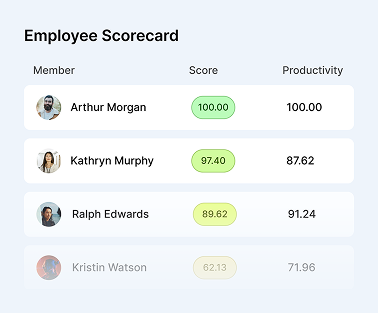
Despite having its numerous benefits, one major hurdle that comes with working with a Remote/Virtual Team is having to make them feel welcomed, building trust in them, and earning theirs as well. All of these are geared towards Work Health and Well-being, Team Performance, and Team Productivity.
Therefore, this article focuses on describing ways to build trusted communication between employees in a remote team, why it is important, and what it affects. It also talks about how to build and attain this level of trusted interaction or remote team trust.

What is The Trust Communication?
There is no gain-say in the fact that a trusted interaction and communication in a remote team is very important. The success of any organization depends largely on how much the employer trusts the employees and how well the employee trusts the organization’s objective.
Trust Communication simply means the building up of a strong and reliable bond between the employer, employees, and everybody that has one role or the other to play in attaining the organization’s objective. For remote workers, a trusted employee communication might be quite hard at first, but it is very much important, and as such, will require effort.
An enabling environment for a trusted interaction brings about transparency and mutual respect for the parties involved. Where there is trust communication, your remote team feels how much you trust them, and as such, they can work productively without pressure or micromanaging.
Simply put, a trust communication allows for everything and anything to be talked about with boldness and confidence, which in turn brings about the unity of all workforce, making them feel more concerned and keying into the objective of the team.
How to Build Trust Communication in your team?
The importance of building trust communication in your team can never be overemphasized. In-fact, trust must be built at all levels or sectors of your team. Building trust communication in your team helps simplify team leadership, motivation, relationship, coaching, and motivation.
At every level of the team, ensure trust communication is enabled. Whether as a co-worker/a teammate, or as the head of the team/team manager, or the head of the organization/ the employer, a trusted communication at all of these stages creates a conducive and productive working environment for employees even if they are working remotely.
Building trust as a co-worker/ a teammate will mean that you are more observant and always ready to listen and hear whatever your employee has to say. Take note of everything that concerns them, and do not at all times be official. Be approachable, sensitive, supportive, and ever ready to learn and ask questions. More importantly, when there is a need to clear any speculations, uncertainty, or assumptions, you should speak up and address it as it is at the moment.
Trust as the head of the team/team manager demands that you are supportive, and at all costs, avoid micro-managing. Micro-management places pressure on employees and makes them unproductive. As the team manager, you build trust communication as long as you encourage working together harmoniously and open communication. Give your team members the benefit of trust to work in your absence and only step in when required.
Lastly, building trust as the head of the organization/ the employer starts first with having an honest and transparent hiring process. For an employer, building trust communication with your employees starts first from the hiring process. The impression made in the mind of an employee at this stage flows through to other stages of the work.
Maximize productivity of your business
Track employee productivity and simplify work with them
Difficulties in Building Trust
Just as it has been stated earlier, building trust has its hurdles. Building trust generally is not an easy task, except if there is a subsisting relationship. But in the case of a remote team that operates virtually, Team Leadership, Communication, Employee Engagement, and Motivation will be much more tedious due to a variety of reasons.
For most organizations working with virtual teams, one of the major difficulties in building trust is that there are usually uncertain as to the specific method or way to go about encouraging trusted interaction and communication with their employees.
The actual truth is that there is no one way to doing this. What this means is that even if a method has once proven useful, it is not a guarantee that it will continue to ensure a trusted interaction among employees. Most times, people try to gain the trust of an employee by relying on their unofficial and social side, but this clearly won’t be effective for some that have a poor social life.
Employees have different personality traits, and many employees have failed to note this for the management of the virtual team. What’s turns someone on might be a big turn-off for someone else. Therefore, building trust in a remote team should be based on the peculiarities and the individualistic traits of each worker.
Another age-long and rampant difficulties in building trust are that most employees, oftentimes, have mistaken Micro-managing for effective monitoring and supervision of employees. There is actually a thin line of differentiation between micro-managing and effective monitoring. Effective monitoring is towards team productivity while micro-managing only places pressure on workers, which makes them underproductive.
Always have a fixed work time for your employees whereby they still have their free and personal time, without having to think about work all the time. Never set unrealistic deadlines, and always respect the off days of your employees.
Conclusion
Summarily, building trust communication has to do with the practice of open communication, showing how much one cares rather than being strict.
Also, it is important that from time to time, employees are given constructive feedback about their strengths and vulnerability; this will help to build trust to make them a better person of themselves; the Monitask Employee Monitoring Software helps in Team Productivity, Employee Communication, Constructive Feedbacks, and Team Management.
– The Monitask Team





